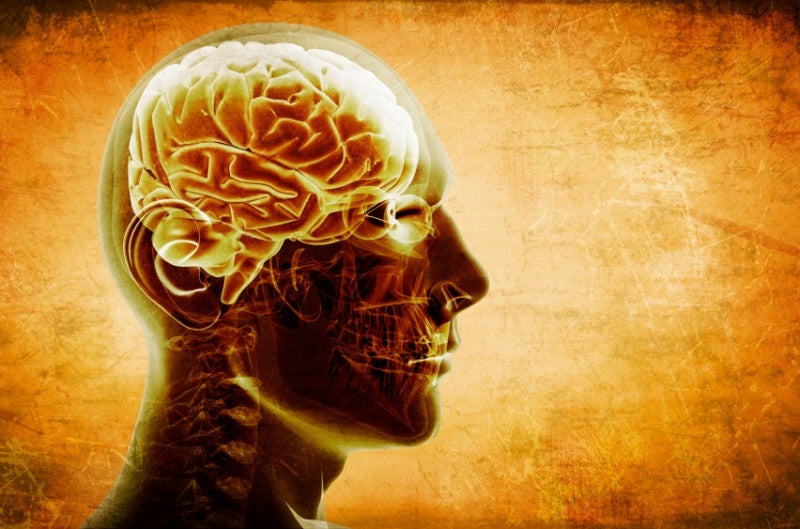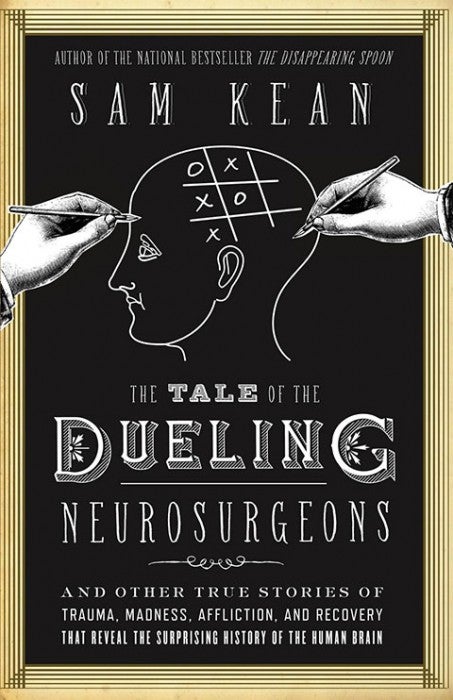
(Photo Credit: istockphoto)
Sam Kean is a journalist and New York Times best-selling author. We caught up with Kean, an upcoming presenter at the Aspen Ideas Festival, to learn more about the findings in his new book on the brain, “The Tale of the Dueling Neurosurgeons.”
He’ll be speaking at the Festival about his latest book on July 1st and joining a panel entitled “Gray Matter: This is Your Brain after 50” on July 2nd.
Aspen Idea: You tackled the periodic table in your first book, “The Disappearing Spoon,” and genetics in your second, “The Violinist’s Thumb.” What inspired you to write about the brain this time?

Sam Kean: Honestly, it was disbelief — or doubt, skepticism, mistrust, whatever you want to call it. Because a few years ago, I was reading about someone who suffered an injury to one specific part of his brain, and his behavior changed in a bizarre way afterward: he suddenly couldn’t recognize animals. And I just didn’t believe it was true. Then a few weeks later, I heard about a woman who suffered an injury to a different part of her brain and lost the ability to speak — but she could still swear just fine. Both of the injuries seemed impossible to me. But it turns out that not only are both stories true, they reveal a lot about how the brain works. And I realized that you could probably write a whole book about the greatest injuries in neuroscience history and what they taught neuroscientists about the inner workings of the brain.
AI: You include so many wonderful characters in the book. Who are some of your favorites?
SK: A few come to mind. The woman who can’t feel fear anymore (because of damage to her amygdala) fascinates me — it would be so liberating and fun in some ways, and so dangerous in others. I’m also fascinated by the people like Clive Wearing or H.M. who lost their memories. Memories are so much a part of who we are, deep down, that life without them seems impossible — yet they live on, for decades! And in many ways, despite this enormous deficit, you can relate to them.
I also love the story of Phineas Gage, the railroad worker who had a spike blown through his skull. It’s so delightfully macabre. I also enjoy it because some historians have recently revised their view of it and come to much different conclusions than the ones that most of us learned in school.
AI: Where is neuroscience going in your opinion?

SK: As you can tell from the book, we have a good grasp on what most individual structures within the brain do. Not everything, but most. We also know a lot about how neurons work and communicate — things on a small physical scale. What we don’t have a great grasp on is how different individual structures work together to produce things like consciousness or a sense of self — really high-level things where you have to scale up from chemicals and cells to a bigger, gestalt view of reality. It’s like we’ve taken apart a car engine and can describe how the spark plugs and carburetor and everything else works by themselves. Now we have to figure out how they work together to propel the car. It won’t be easy, but these are some of the biggest questions out there in science, and the most exciting.
AI: The book has so many individual stories, but what was the overall theme?
SK: I think the book grows in a few ways. First, the opening chapters focus on small structures and low-level things — how neurotransmitters work, how neurons communicate. From there we build up to basic brain systems that many animals have, things like vision and emotions. Finally, we graduate to some human-specific things like language and certain types of memories. So as the book progresses, you get more and more “human” at each step.
The book also focuses more on recovery toward the end. Because while the brain is fragile in many ways — you can scoop it like an avocado, remember — it also has an amazing ability to heal itself after injuries and especially to compensate for lost abilities.
Related to this, there’s a tendency, I think, to see people with dramatic brain deficits as freaks — oddities whose minds work completely differently than ours. But most people don’t learn much about these people beyond a paragraph or two in a textbook. They don’t stop to think that these people also have lives beyond the neurologist’s office. And when you look at the whole, entire person — even with extreme cases like H.M. or Phineas Gage — one thing that stands out is how similar they are to us at the end of the day. They have the same hopes and dreams, the same disappointments. They’re people just like we are.
AI: What’s the most surprising fact you learned about the human brain?
SK: We all know that subconscious drives and appetites and other processes affect our behavior. But I didn’t realize quite the extent to which that’s true. I heard a psychologist describe this very well with a metaphor about a man riding an elephant. The man is like our conscious brain, the elephant our subconscious brain, and every time the man strikes the elephant on the flank, the elephant turns left or right. So the man gets pretty full of himself because he imagines that he’s in charge of this big beast. But we all know that, if the elephant decides to go left instead of right once, this puny little guy won’t be able to stop him — the elephant is too powerful. Our brains are a lot like that. The conscious brain is important, and it’s doing something useful, but it doesn’t have quite the power we want to believe it does.

